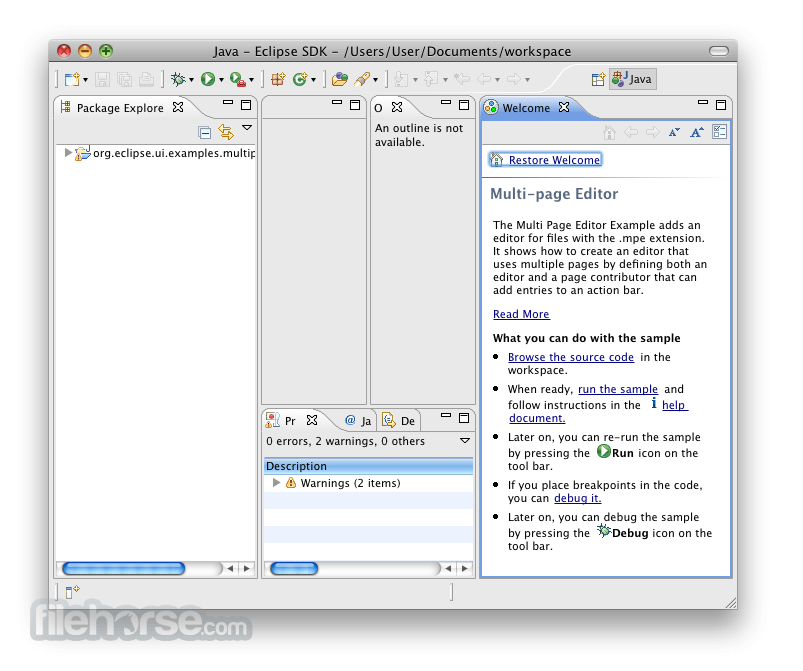
- GCC COMPILER FOR ECLIPSE MAC HOW TO
- GCC COMPILER FOR ECLIPSE MAC INSTALL
- GCC COMPILER FOR ECLIPSE MAC SERIES
However, I think that even companies (especially if they are small organizations) can take great advantages in using an open source tool-chain.Īccording to me, these are the most important advantages in using a Eclipse/GCC tool-chain for embedded development with STM32 MCU: You have to figure out that in business time means money and, sometimes, commercial IDE can reduce the learning curve (especially if we consider that ST gives explicit support to these environments). Company ofter prefers to use commercial IDEs with annual fees that allow to receive technical support. First of all, the audience should be divided between professionals and hobbyists. Probably the best answer is that it depends on the application. This is a really common question: which tool-chain is the best one to develop apps for STM32? The question is unfortunately not simple to answer. Why choose Eclipse/GCC as tool-chain for STM32 Because this is a really common question from newbies.

When ready, you can come back here again and continue the reading.īefore starting create our new test project, I would like to say something about why using Eclipse/GCC as tool-chain to develop STM32 firmware.

If you still haven't installed the base tool-chain, you can start reading from this post and stop to the paragraph named " Create a test project".
GCC COMPILER FOR ECLIPSE MAC INSTALL
In this article I won't explain again all the steps required to install Eclipse and GCC on your computer. Unfortunately, at the moment I can test these instructions only on a STM32-F4 processor, but I'm going to buy other Nucleo boards to do tests.
GCC COMPILER FOR ECLIPSE MAC HOW TO
In this post I'll show you how to setup from scratch an Eclipse project to develop applications for STM32 platform using the latest version of STM32Cube-Fx framework (the latest version available at time of writing is 1.6 for F4). This causes my instructions to be wrong for processor families different from STM32-F4. Unfortunately, the plug-in author has updated just the template for STM32-F4 family to the more recently STM32Cube-F4 HAL framework from ST (which still supports only commercial IDE.), leaving the other templates still based on the old Standard Peripheral Library, which is no longer supported by ST and STM32CubeMX tool used in my tutorial. When a new project is created using the plug-in wizard, a template is used depending on processor family.

This was mainly caused by the GNU ARM Eclipse plug-in, or rather by the included templates in the plug-in.

But, some of them had serious troubles in getting those instructions working for other STM32 families (F0, F1 and so on). Since then, many people have reported me positive feedback on that tutorial.
GCC COMPILER FOR ECLIPSE MAC SERIES
I showed in a series made of three posts how to successfully setup a complete Eclipse/GCC ARM tool-chain to develop applications for the STM32Nucleo-F4 developing board. If you landed to this page, you probably already know that I've covered this topic in the past. In the free book sample you can find the whole complete procedure better explained. So, I started writing a book about the STM32 platform. Thanks to the feedbacks I have received, I reached to the conclusion that it's really hard to cover a topic like this one in the room of a blog post.


 0 kommentar(er)
0 kommentar(er)
